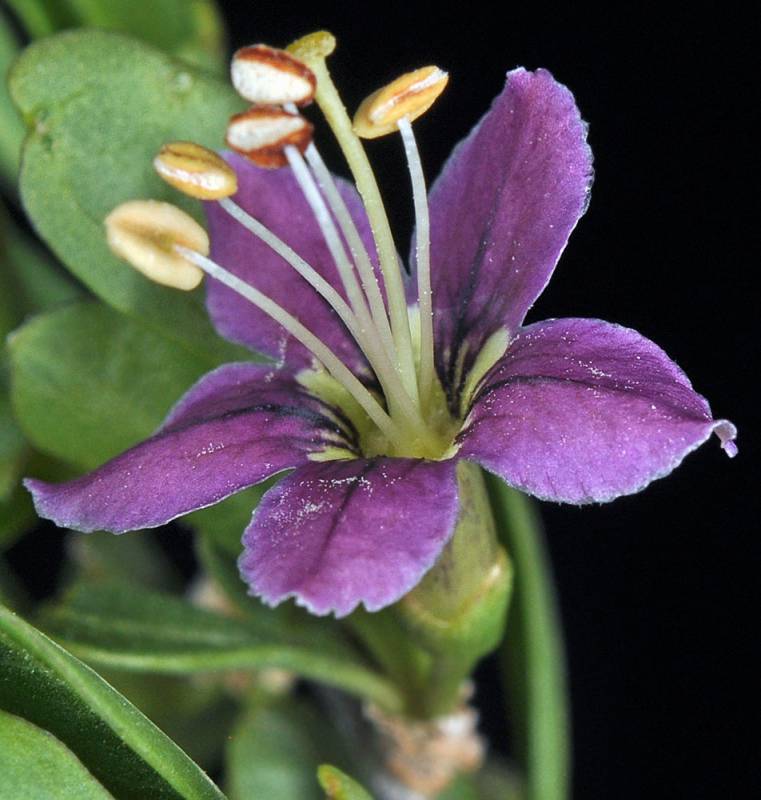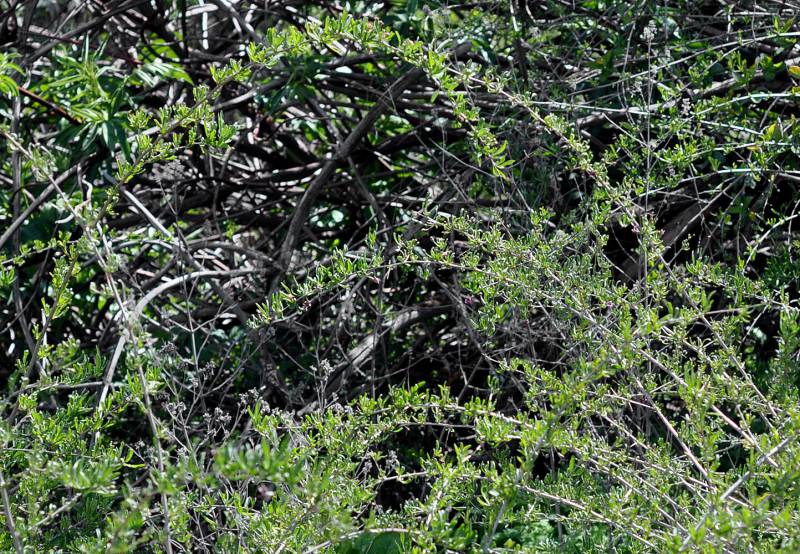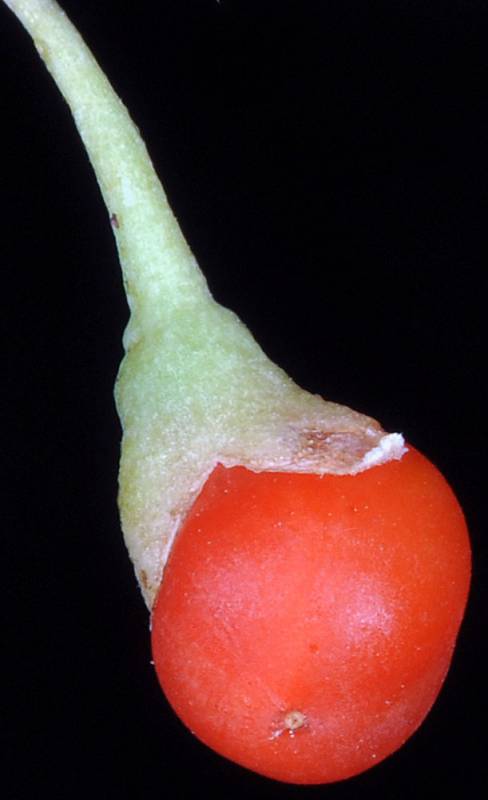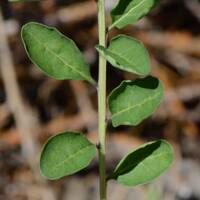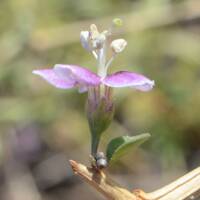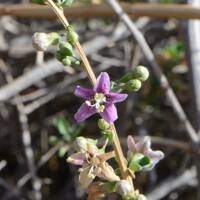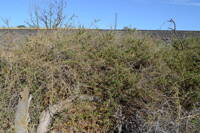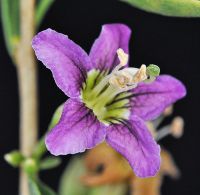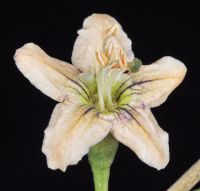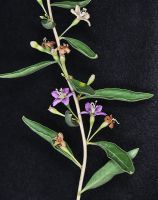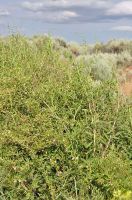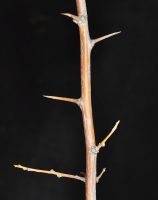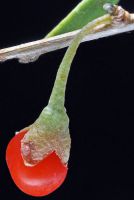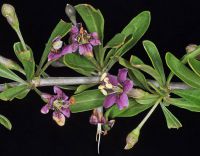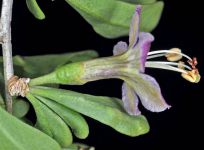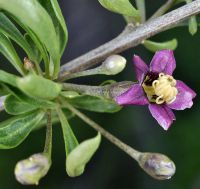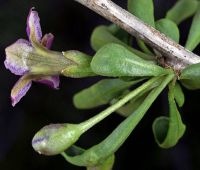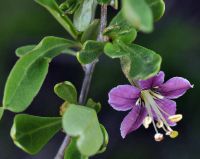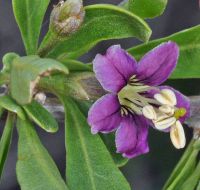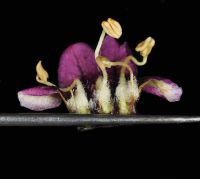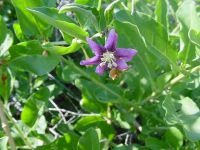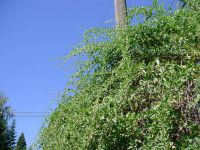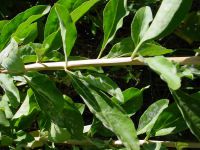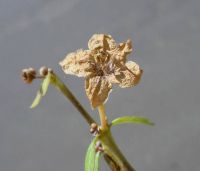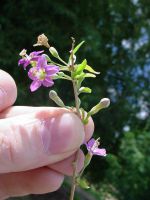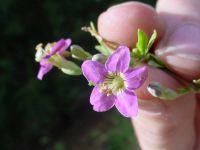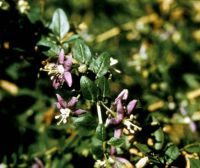Distribution: Occurring chiefly east of the Cascades crest in Washington; British Columbia to California, east across North America to the Atlantic Coast.
Habitat: Disturbed ground.
Flowers: June-September
Origin: Introduced from Eurasia
Growth Duration: Perennial
Conservation Status: Not of concern
Pollination: Self-pollination, bees, hummingbirds
Glabrous shrub with long, weak, sparsely thorny, arched or climbing branches, 1-6 m. tall.
Leaves short-petiolate, entire, dull, elliptic to lanceolate or oblanceolate, up to 7 cm. long and 3.5 cm. wide on new growth, much smaller on old wood.
Flowers 1-3 in the leaf axils on pedicels 0.7-2 cm. long; calyx tubular, with 3-6 short lobes; corolla lavender or purplish, 9-14 mm. long, tubular, with 5 broad, spreading lobes about equaling the tube; stamens 5; style solitary, ovary superior.
Fruit a red berry, ellipsoid or ovoid, 1-2 cm. long.
Publication: Sp. Pl. 1: 192. 1753.
PNW Herbaria: Specimen records of Lycium barbarum in the Consortium of Pacific Northwest Herbaria database
WA Flora Checklist: Lycium barbarum checklist entry
OregonFlora: Lycium barbarum information
E-Flora BC: Lycium barbarum atlas page
CalPhotos: Lycium barbarum photos

